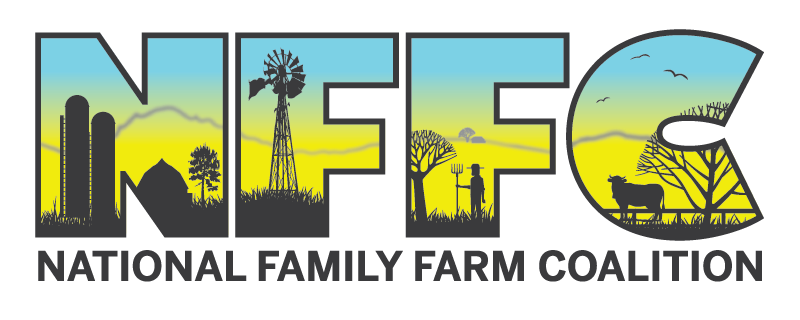The 2022 Inflation Reduction Act, passed on August 11, 2022, includes more than $370 billion in investments towards conservation, environmental, and agricultural programs. This landmark bill was heralded by President Joe Biden as “the most aggressive action ever…in confronting the climate crisis.” In a letter to House colleagues, Congresswoman Nancy Pelosi even proclaimed that the bill is “life-changing legislation”.
The Inflation Reduction Act is certainly an important piece of legislation, with many far-reaching impacts on the US food and agriculture sector. Not all of these impacts are good, however, and some are downright ugly.
The Good
The IRA directs nearly $20 billion dollars over the next decade towards four important farmland conservation programs – the Environmental Quality Incentives Program (EQIP), the Regional Conservation Partnership Program (RCPP), Conservation Stewardship Program (CSP), and the Agricultural Conservation Easement Program (ACEP). This is critical because the enrollment demands for these existing programs far exceed current funding. The Inflation Reduction Acts includes language for all of these programs mandating that new funding prioritize soil health and greenhouse gas emission reductions.
- $8.45 billion for the Environmental Quality Incentives Program (EQIP), which provides producers with financial and technical assistance to implement NRCS conservation practices. The IRA noted that funding should prioritize “diet and feed management to reduce methane emissions from ruminants”. This $8.45b would not be subject to the EQIP requirement that 50 percent of program funds go towards livestock farms (in practice, this requirement channels money towards Confined Animal Feeding Operations, or CAFOs).
- $4.95 billion for the Regional Conservation Partnership Program (RCPP), supporting the partnership of organizations, government agencies, and producers to address natural resource concerns. Existing guidelines state that 50 percent of RCPP funding must go towards projects in Critical Conservation Areas.
- $3.25 billion for the Conservation Stewardship Program (CSP) which helps producers improve on their existing conservation practices, or to make additional sustainability advancements. The CSP is the country’s largest conservation program by acreage.
- $1.4 billion for the Agricultural Conservation Easement Program (ACEP), protecting working lands from development through conservation easements.
The IRA also includes a number of additional provisions that will improve the ability of government agencies to provide technical assistance, with $125 million specifically set aside for underserved producers. Renewable energy initiatives are also included, with almost $10 billion for Rural Electric Cooperatives.
Finally, NFFC is pleased that $2.2 billion has been allocated to help farmers, ranchers, and foresters who have experienced loan discrimination by the USDA – although the IRA completely removes race-based requirements for discrimination claims (see “The Ugly” below).
Additional specific funding allotments include:
- $1 billion for technical assistance through the Natural Resources Conservation Fund
- $1 billion to promote renewable energy
- $9.8 billion to Rural Electric Cooperatives
- $2.2 billion to provide financial assistance for farmers, ranchers, and forest landowners determined to have experienced discrimination prior to January 1, 2021
- $250 million to Research, Education, and Extension
- $250 million to improve land access, including heirs property and fractionated land
- $125 million to technical assistance for underserved farmers, ranchers, and foresters
- $10 million to support the activities of the USDA Equity Commission available from the current fiscal year until 2031
- $3.7 billion to forest management, conservation, and expansion
The Bad
We applaud the major wins for the conservation programs listed above, but there are a number of concerning requirements or provisions that promote false solutions to the climate crisis, namely carbon sequestration. The IRA sets aside $300 million to assess carbon sequestration and emission trends, and also allows EQIP and RCPP funding to finance sequestration projects. Carbon sequestration is touted by the fossil fuel and other polluting industries as a “win-win” net-zero solution that benefits energy production while helping the planet. These companies claim to capture greenhouse gas emissions, including carbon, and then either permanently sequester carbon in underground rock, or repurpose gases for industrial use.
In truth, investing in carbon capture only increases our demand and reliance on fossil fuels (and, of course, industry profits) while posing significant risks to surrounding communities and ecosystems. NFFC has opposed the greenwashed “solutions” of carbon sequestration, carbon markets, and biofuels for many years.
The IRA specifies that:
- $300 million is available to assess carbon sequestration and emission trends through USDA’s Greenhouse Gas Inventory and Assessment Program
- EQIP and RCPP funds can be used, at the discretion of the USDA secretary, to support carbon sequestration projects
- $500 million is available to increase the sale and use of agricultural biofuels
- Funds for renewable energy and rural electric cooperatives can support carbon sequestration projects, at the discretion of the USDA secretary
- Finally, all resources for all conservation programs will be incremental in a 4-year period starting 2023 – limiting annual funding.
The Ugly
As stated in our previous response to the Inflation Reduction Act, dismantling debt relief for farmers of color is a major betrayal towards the 17,000 farmers and ranchers who already applied for and were promised relief from their loans. $4 billion in loan forgiveness for “socially disadvantaged farmers”, defined by race or ethnicity, had been included in Section 1005 the 2021 American Rescue Plan. Unfortunately, that funding was soon attacked by lawsuits in multiple states with misfounded claims of reverse discrimination towards white farmers. This litigation became obsolete after the IRA was passed.
Instead, the IRA removed all framing or language about race in its $5.3 billion of loan forgiveness – $3.1 billion for economically distressed farmers, and $2.2 billion for farmers who have experienced discrimination.
The term “discrimination” without any mention of race is empty. Loan forgiveness without the context of widespread, historical discrimination by the USDA towards farmers of color, especially Black farmers, supports continued systemic racism. We hope that the implementation of the Inflation Reduction Act’s debt relief provisions will be accomplished through partnership with farmers of color, and all small farmers, as quickly as possible and before we lose more of them, further harming the communities they serve.

